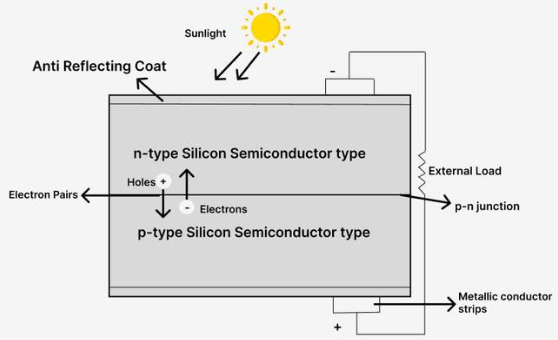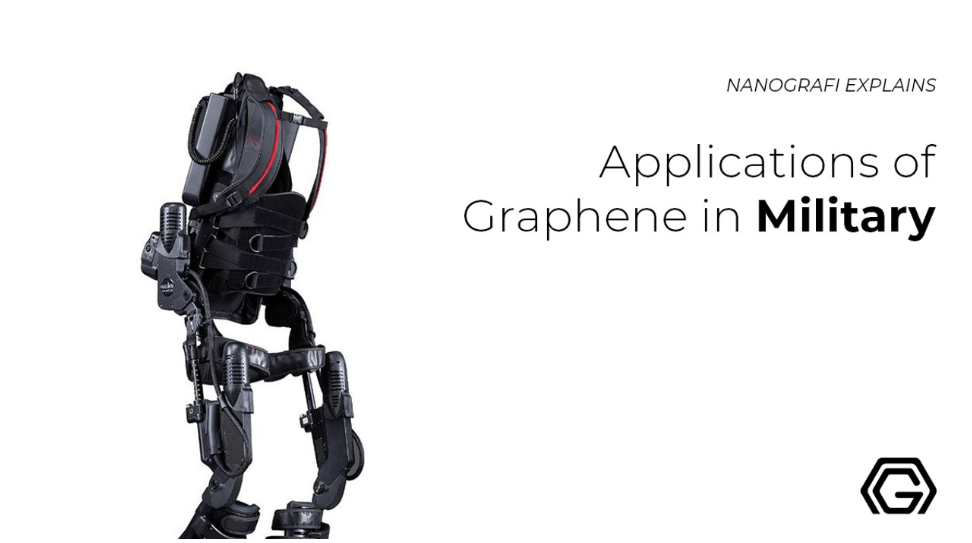The Role of Nanotechnology in Aerospace
Nanotechnology, the manipulation and utilization of materials at the atomic or molecular scale, stands at the forefront of scientific and engineering innovation, particularly within the aerospace sector. This field of study, which encompasses the design, synthesis, characterization, and application of materials and devices on the nanoscale (typically less than 100 nanometers), has burgeoned into a pivotal area of research due to its potential to revolutionize a myriad of industries.
Nanotechnology offers approaches to overcoming longstanding challenges in aerospace engineering, from enhancing material properties to advancing the capabilities of electronic systems, all of which contribute to the overarching goal of more sustainable and efficient air and space travel. Explore the forefront of nanotechnology with Nanografi, a leading company in advanced materials, recognized for its extensive collaborations in over 100 countries and offering a product variety exceeding 4000. Visit now.
Introduction
The evolution of aerospace technology has been characterized by continuous innovation aimed at achieving greater efficiencies, improved safety standards, and reduced environmental impact. The advent of nanotechnology in aerospace represents a significant milestone in this evolutionary journey. By leveraging the unique properties of materials at the nanoscale, engineers and scientists are able to develop solutions that were previously unattainable, such as lightweight yet durable nanocomposites, precision manufacturing processes, and advanced nanoelectronics for improved navigation and control. As we delve deeper into the specifics of how nanotechnology is being applied in aerospace—from the development of new materials and manufacturing techniques to its impact on electronics, safety, and environmental sustainability—the role of this cutting-edge technology in shaping the future of aerospace becomes increasingly clear.
What is Nanotechnology?
Nanotechnology is a field of science and engineering that focuses on the study, manipulation, and application of materials and devices at an incredibly small scale, typically at the level of atoms and molecules. To put this in perspective, a nanometer is one billionth of a meter, which is about 10,000 times smaller than the diameter of a human hair.
At this tiny scale, materials can exhibit unique properties that differ significantly from their larger-scale counterparts. For example, nanoparticles might show different colors, increased strength, or altered electrical properties compared to the same material in bulk form. This happens because the smaller particles have a much larger surface area compared to their volume, and quantum mechanical effects become significant.

Figure 1. Comparison of human hair, micron and nano size.
What is Nanotechnology Used for?
Nanotechnology integrates principles from physics, chemistry, biology, and engineering to create new materials and devices that can be used in various industries, including medicine, electronics, energy, and environmental science.
Medicine
Nanotechnology is transforming healthcare through the development of novel diagnostic devices, targeted drug delivery systems, and advanced therapies. For instance, nanoparticles are used to improve drug solubility, enhance imaging techniques, and target cancer cells directly, minimizing damage to healthy tissues.
Electronics
In electronics, nanotechnology enables the production of smaller, faster, and more efficient devices. It's instrumental in improving the performance of batteries, displays, and processors. Nanomaterials, such as carbon nanotubes and graphene, are used in making transistors that are smaller and more energy-efficient than those made from traditional materials.
Energy
Nanotechnology helps increase the efficiency of energy capture, conversion, and storage systems. It is used in solar panels to improve light absorption and convert more sunlight into electricity. Nanotechnology also enhances the performance of fuel cells, batteries, and supercapacitors for better energy storage solutions.

Figure 2. Working of solar cell.
Environmental Science
Nanotechnology offers solutions to various environmental challenges. It is used in water purification systems to remove contaminants at the molecular level. Nanoparticles are also employed in environmental remediation techniques to clean up pollutants such as oil spills and heavy metals from soil and water.
Materials Science The field of materials science has been revolutionized by nanotechnology, which allows for the design of materials with specific, enhanced properties like increased strength, lighter weight, improved control of light spectrum, and greater chemical reactivity. Nanostructured materials are critical in industries such as aerospace, automotive, and construction.
Consumer Products Nanotechnology is increasingly integrated into consumer products to improve performance and functionality. This includes cosmetics, clothing, and food products. For example, nanomaterials are used in cosmetics to improve the absorption of active ingredients. In textiles, nanotechnology provides stain resistance and durability enhancements.
Food Safety
In the food industry nanotechnology is applied in food packaging and preservation. Nanosensors are used to detect contaminants and pathogens, ensuring food safety. Additionally, nanopackaging materials can help extend the shelf life of food products by preventing spoilage and maintaining quality.
Aerospace
In the aerospace industry, nanotechnology is pivotal for developing materials that are both lighter and stronger, enhancing fuel efficiency and structural integrity. Nano-engineered materials like carbon nanotubes are used to reduce weight while increasing durability, crucial for withstanding extreme environmental conditions. Additionally, nanotechnology improves the thermal resistance of aerospace components, essential for protecting against the high temperatures encountered during flight and re-entry.
This article will examine nanotechnology in aerospace in more detail:
How Nanotechnology is used in Aerospace?
Nanotechnology, particularly the use of nanoparticles, is revolutionizing the aerospace industry by offering enhancements in material properties, component performance, and overall aircraft efficiency. Here’s an easy-to-understand look at how nanotechnology is being integrated into aerospace applications:
- Lightweight Materials: One of the most significant contributions of nanoparticles in aerospace is the development of lightweight composite materials. Nanoparticles such as carbon nanotubes and graphene are added to metals, polymers, and ceramics to create nanocomposites. These materials are not only lighter than traditional materials but also exhibit enhanced strength, stiffness, and durability. The reduction in weight leads to greater fuel efficiency and lower greenhouse gas emissions, which are critical goals in aerospace development.
- Improved Structural Integrity: Nanoparticles enhance the mechanical properties of materials used in aircraft construction, such as improved tensile strength, resistance to wear and tear, and thermal stability.
- Enhanced Thermal Protection: Aerospace vehicles endure extreme temperatures, especially during high-velocity travel and atmospheric re-entry. Nanotechnology offers advanced thermal protection systems through materials like nanostructured ceramics or aerogels. These materials can withstand high temperatures and provide excellent insulation, which is vital for protecting sensitive electronic equipment and maintaining the structural integrity of the space vehicle.
- Anti-Corrosion Coatings: Corrosion is a major issue in aerospace, as it can lead to significant maintenance costs and safety risks. Nanoparticles are used to enhance the anti-corrosion properties of coatings applied to aerospace components. For instance, nano-sized ceramic particles can be incorporated into paints and coatings to improve their resistance to oxidation and environmental degradation. This extends the life of aircraft components and reduces the need for frequent replacements.
Did you know that graphene based materials are used in anti-corrosion coatings? Learn now.
- Sensing and Repair Nanotechnology: enables the development of smart materials that can sense environmental changes and respond accordingly. Nanosensors integrated into aerospace structures can detect issues such as cracks, corrosion, or excessive heat, often before they become visible or critical. Additionally, some nanomaterials can be designed to self-heal minor damages, mimicking biological processes to automatically repair cracks or scratches.
- Efficiency in Energy Usage: Nanotechnology also contributes to more efficient systems within aerospace vehicles, such as improved electrical conductivity for better power distribution and lighter and more efficient batteries. Nanoparticles like graphene are used in the development of next-generation lithium-ion batteries, which are capable of holding more charge and recharging more quickly, ideal for high-power applications in aerospace missions.
Where is graphene used in military applications? Visit blog page.
Nanomaterials used in Aerospace
In the aerospace industry, specific nanoparticles are utilized for their unique properties to enhance the performance and durability of materials and systems. Here are some detailed examples of how certain nanoparticles are used in various aerospace applications:
Carbon Nanotubes (CNTs)
Application: Structural Composites
Usage: Carbon nanotubes are renowned for their exceptional strength and stiffness, making them ideal for reinforcing composite materials used in aircraft frames and engine components. For instance, Boeing and Airbus incorporate CNT-reinforced composites in the fuselage and wings of aircraft to reduce weight while maintaining structural integrity and improving fuel efficiency.
Graphene
Application: Coatings and Sensors
Usage: Graphene is utilized in the aerospace sector for its outstanding electrical conductivity and barrier properties. It is used in anti-corrosion coatings to protect aircraft parts from oxidative damage and environmental degradation. Additionally, graphene-based sensors are employed for structural health monitoring, capable of detecting damage or stress in aircraft materials at an early stage.
To examine graphene and derivative products, visit the website.

Figure 3. Schematic representation of the use of graphene in aeroplanes.
Silicon Carbide (SiC)
Application: High-temperature components
Usage: Silicon carbide nanoparticles are used in materials that require high thermal stability and resistance to wear. These properties make SiC ideal for components in jet engines and other high-temperature areas of spacecraft, where it helps in maintaining performance under extreme conditions.
Boron Nitride Nanotubes (BNNTs)
Application: Thermal protection systems
Usage: BNNTs are notable for their high thermal stability and electrical insulation properties. They are used in the thermal protection systems of spacecraft, providing excellent heat resistance during re-entry into Earth’s atmosphere. This material ensures the structural integrity of the spacecraft under the severe thermal conditions encountered during space missions.
Titanium Dioxide (TiO2)
Application: Photocatalytic coatings
Usage: Titanium dioxide nanoparticles are used in self-cleaning and photocatalytic coatings applied to the exterior surfaces of aircraft. These coatings help in breaking down organic pollutants, reducing maintenance needs, and improving the longevity of the paint. Additionally, TiO2 coatings are explored for their UV protection capabilities, essential for high-altitude and space vehicles.
Silver Nanoparticles
Application: Antimicrobial coatings
Usage: In the aerospace industry, maintaining a sterile environment is crucial, especially in spacecraft where microbial growth can compromise the health of the crew and integrity of the mission. Silver nanoparticles are incorporated into coatings and filters for their potent antimicrobial properties, used to sterilize air and surfaces in the confined spaces of aircraft and spacecraft.
These examples illustrate how nanoparticles are tailored to meet specific needs in aerospace, leveraging their unique properties to enhance the performance and safety of aerospace vehicles.
Conclusion
Nanotechnology's role in aerospace is transformative, enhancing materials and systems to boost the efficiency and durability of aerospace vehicles. By incorporating nanoparticles like carbon nanotubes and graphene, aerospace technology gains from improved structural integrity, thermal protection, and energy efficiency. This integration not only advances technical performance but also promotes environmental sustainability by reducing fuel consumption and emissions. As research progresses, the continued development of nanotechnology promises to expand the capabilities and reduce the ecological impact of aerospace endeavors.
To follow the latest developments and innovations related to nanotechnology, visit Blografi.
References
Anderson, T. J., & Liu, H. (2020). Nanomaterials in aerospace: Applications and developments. Aerospace Science Press.
Applications of Graphene in Military - Nanografi Nano Technology. (n.d.). Retrieved May 14, 2024, from https://nanografi.com/blog/applications-of-graphene-in-military/
Commercial Value and Benefits of Carbon Nanotubes Transistors - Nanografi Nano Technology. (n.d.). Retrieved May 14, 2024, from https://nanografi.com/blog/commercial-value-and-benefits-of-carbon-nanotubes-transistors/
Enhancing Thermal Energy Storage with Nanoparticles - Nanografi Nano Technology. (n.d.). Retrieved May 14, 2024, from https://nanografi.com/blog/enhancing-thermal-energy-storage-with-nanoparticles/
Lee, K., & Park, T. H. (2018). Environmental applications of nanotechnology. In Nanotechnology for environmental engineering (pp. 45-72). Palgrave Macmillan.
Patel, R., Davidson, J., & Smith, L. (2022). Carbon nanotubes and graphene in aerospace applications. Journal of Aerospace Technology and Management, 14(1), 1-15. doi:10.1016/j.jatm.2022.03.004
The Future of Medicine: Nanodrugs - Nanografi Nano Technology. (n.d.). Retrieved May 10, 2024, from https://nanografi.com/blog/the-future-of-medicine-nanodrugs/
The Role of Nanotechnology in Ensuring Food Safety - Nanografi Nano Technology. (n.d.). Retrieved May 14, 2024, from https://nanografi.com/blog/the-role-of-nanotechnology-in-ensuring-food-safety/
The Use of Graphene-Based Materials in Anti-Corrosion Coatings - Nanografi Nano Technology. (n.d.). Retrieved May 14, 2024, from https://nanografi.com/blog/the-use-of-graphenebased-materials-in-anticorrosion-coatings/
Titanium Dioxide Reshaping the Field of the Cosmetic Industry - Nanografi - Nanografi Nano Technology. (n.d.). Retrieved May 14, 2024, from https://nanografi.com/blog/titanium-dioxide-reshaping-the-field-of-the-cosmetic-industry-nanografi-/
Use of Graphene in Electronics - Nanografi Nano Technology. (n.d.). Retrieved May 14, 2024, from https://nanografi.com/blog/use-of-graphene-in-electronics/
Vlachogianni, T., Fiotakis, K., Loridas, S., Perdicaris, S., & Valavanidis, A. (2013). Potential toxicity and safety evaluation of nanomaterials for the respiratory system and lung cancer. Lung Cancer: Targets and Therapy, 4, 71–82. https://doi.org/10.2147/LCTT.S23216
Water Purification and Nanotechnology - Nanografi Nano Technology. (n.d.). Retrieved May 14, 2024, from https://nanografi.com/blog/water-purification-and-nanotechnology/
Recent Posts
-
Advanced Materials for Unmanned Aerial Vehicle (UAV) Protection Against Laser
Consider a UAV on a critical mission, rendered inoperative by a sudden laser attack. With the increa …26th Jul 2024 -
Simulation and Modeling of Material Properties
Our world is composed of a dazzling array of materials, each with its own unique properties that dic …19th Jul 2024 -
Advanced Coatings for Superior Corrosion and Wear Resistance
Corrosion and wear pose significant challenges across various industries, leading to substantial eco …12th Jul 2024






